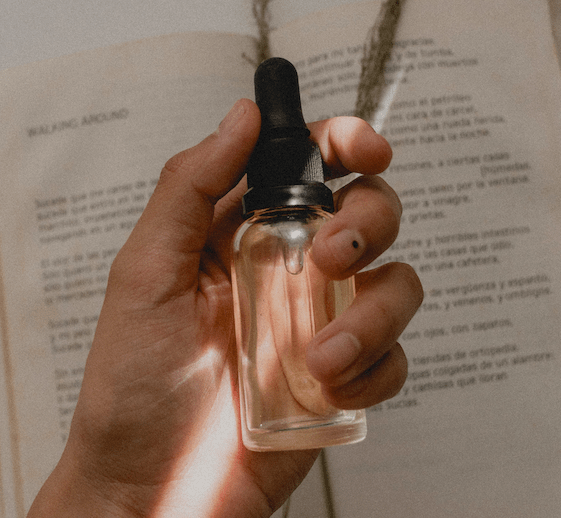‘The commodification of wellness’: being wary of skincare brands
I’ll be honest. I’m a sucker for serums, a fanatic for face creams, and cleansers are my kryptonite. In short, like many millennials and Gen Z-ers, I am a bit of a freak for skincare. As the self-care and wellness movement has exploded, and the fact that we’ve spent the best part of this year finding small pleasures within our own houses, the hunt for dewy, clear skin has never been more popular. For that matter, it has also never been more accessible.
Like perhaps many of you, my early days of skincare involved the pursuit of getting rid of the hormonal tween acne that was scattered across my jawline. It generally included products from the aisles of Boots, recommended in the pages of ‘Mizz’ or ‘Sugar’, such as the St Ives’ apricot face scrub, now thoroughly condemned in the intense skincare communities for its extensively abrasive qualities.
In some ways, it is great that we have the control and the ability to improve the health of our skin
Nowadays, the divide between luxury and budget skincare has drifted from the Nivea-Crème de la Mer dichotomy, into an era of budget serums and toners jam-packed with dermatologist-recommended ingredients we’re all encouraged to seek in order to finesse our barefaced selfies and slow down the visual effects of ageing.
In some ways, it is great that we have the control and the ability to improve the health of our skin – it has never been easier to buy effective, non-comedogenic (meaning less likely to clog pores), high SPF facial sun creams, and it is perfectly easy to find retinol and vitamin C serums.
If you’re a skincare lover, you can probably reel off a bunch of other recommended ‘essential’ chemicals like salicylic acid, glycolic acid, AHA, BHA, benzoyl peroxide, niacinamide, free radicals, hyaluronic acid, lactic acid… the list goes on. Sounds like quite a lot, right?
There are rarely warnings about possible side effects like chemical burns
While you can isolate and choose which substances you want to use specifically on your skin, it’s also pretty overwhelming seeing the options presented to you as ‘important’. Equally, factors such as your own skin chemistry and the concentrations or pHs of the solutions matter greatly, beyond just the promise that it helps remove tough acne.
In fact, there has been controversy in the skincare world around this endless content on what we need and what is available. For many of the acids listed above, there are specific concentrations where they are considered to be most effective. In many of these cases, strong concentrations are regularly used in the hands of qualified professionals in controlled environments.
Yet, with the increased availability and profile of these chemicals, some of the more potent acids are falling into the hands of skincare enthusiasts for home use, something a number of high profile dermatologists have advocated for more regulation on. While there are often disclaimers against using certain products during pregnancy or with certain medications, there are rarely warnings about possible side effects like chemical burns, for example.
It seems that regularly clinical-sounding terminology is often exploited
This is even relevant in some high-profile brands like the cult favourite, ‘The Ordinary’. While many of their vast line of products are raved about, their AHA peeling solution contains a very high 30% AHA which has, in a number of cases shown in the media, left consumers with painful chemical burns. Equally, many people, having read about the apparent benefits of numerous different chemicals on the skin, are inclined to use too many products, which can also cause a harmful chemical abrasion to the skin.
Beyond the concerns about the possible harm or even merely lack-of-usefulness of some popular skincare products, there is the simple fact that the language of the skincare industry, and the wellness industry in general, can be incredibly confusing and misleading.
There are more resources to learn about chemicals that can aid skin than ever, and people are keen to try things out that are seemingly more scientifically sound. However, it seems that regularly clinical-sounding terminology is often exploited. Certain brands are plugged as being ‘dermatologist-approved’, ‘clinical’ or ‘medical grade’. These terms are confusing as, in general, the only actual ‘medical grade’ skincare products are the ones specifically prescribed by a professional, and any shop-bought skincare product can, in theory, be referred to using some medical-sounding terms without really being clinically significant.
Some cult brands just know which chemical names are the correct buzzwords to use
Equally, it’s worth being aware that for every qualified professional giving advice out of interest in educating the public, there are others who are sponsored by brands to advertise products or those who are keen amateurs with big followings who don’t really have the credentials to be making sweeping recommendations about products. While this alone doesn’t mean malicious intent or a product that won’t work, it does cloud our perspectives about what we both need and is beneficial for skin health.
I don’t condemn the availability of information or skincare products – I have personally found a specific combination of ingredients which I find make my skin feel at its best, but I do think we should be wary of the place of skincare in the wellness industry. While it can be beneficial, the commodification of wellness and availability of cult products is ultimately there to make businesses money over our actual wellbeing. It seems like some cult brands just know which chemical names are the correct buzzwords to use, and how to create the perfect instagrammable, minimalist packaging, over clinical benefit.

Comments